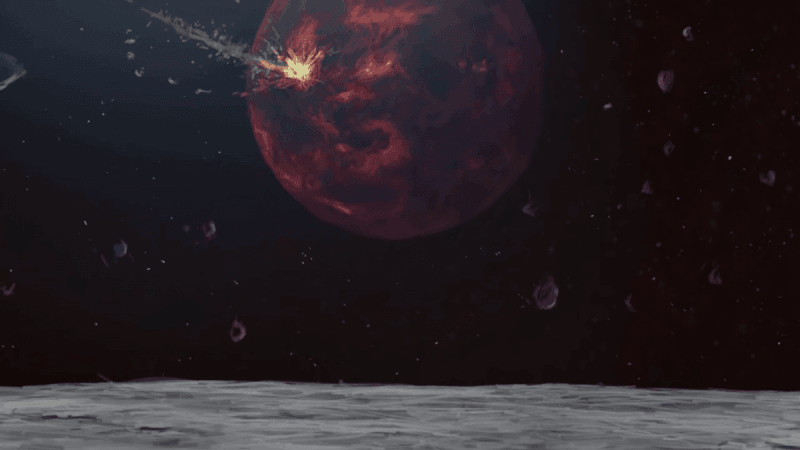According to a new study published in the journal Nature Geoscience, there is a possibility that asteroid impacts slowed the oxygenation of the Earth's atmosphere.
Scientists examined small, molten particles called impact spherules that form in the Earth's crust when an asteroid collides with the planet. According to the team's latest findings, asteroid bombardment may have been one of the factors preventing oxygen levels from increasing.

Recent discoveries of these spherules in drill cores and excavations show that the asteroid impact rate may be 10 times greater than expected. As a result, the Earth's levels of oxygen would have been significantly altered. All that additional space rock causes chemistry that keeps more oxygen from entering the atmosphere.
After the arrival of photosynthesizing cyanobacteria 2.4 billion years ago, oxygen levels began to grow rapidly in the Great Oxidation Event. Over time, when space objects continually smashed into Earth, the vapours released by each impact would have depleted the small amounts of oxygen remaining in the early atmosphere.
According to astronomer and geologist Laura Schaefer of Stanford University, late Archean bombardment by asteroids exceeding 6 miles in diameter created enough reactive gases to entirely devour low quantities of atmospheric oxygen. "We believe hits eliminated oxygen from the atmosphere, breaking up the whiffs. Spherule strata in Australia's Bee and Dales Gorges recorded substantial effects."
After the bombardment stopped, oxygen levels began to rise, modifying Earth's surface chemistry and making it livable.

Impact spherules
According to research published in the magazine Nature, impact spherules are formed as a record of the Earth being heavily bombarded in the distant past.
While impact craters are by far the most visible evidence of asteroid strikes, craters on Planet are rapidly covered or erased by surface weathering and tectonic processes.
The mass of an asteroid that hits Earth often vaporises a target rock. After expanding into a massive plume or fireball, the vapour cools and condenses into spherules5. This global layer is deposited on asteroids over 10 kilometres in diameter. Even if the source crater cannot be discovered, spherule layers remaining in the geologic record give evidence of an impact.
The impact chronology from such spherule strata shows a much larger impactor flux 3.5 billion years ago. Unaltered impact spherules are made of glass (microtektites) or glass plus crystals (flying crystals) (microkrystites). Impact spherule layers build swiftly and can be quite wide, even global in scope.
Then analyse the environmental and biotic repercussions of massive impacts, spherule layers are probably preferable to terrestrial craters and comparable formations.
Impacts with no craters, such as those in pre-Mesozoic oceanic crust, might be recorded in spherule layers. Variations in surface conditions and/or impactors might be reflected in variations in spherules and spherule strata as a consequence of geologic age.
After the Late Heavy Bombardment, the impactor flow decreased gradually.










